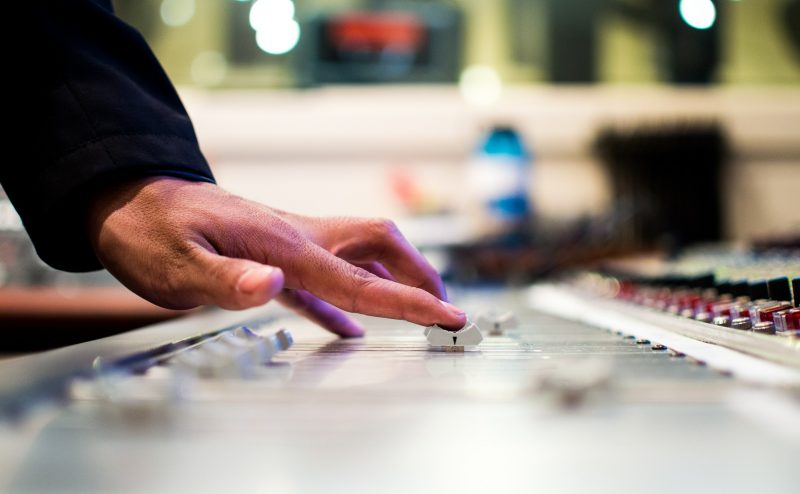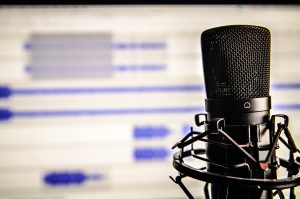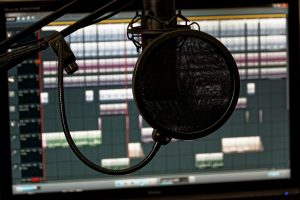
Editing | Filmmaking | How To's | Rhode Island
The Practical Filmmaker’s Guide to Great Sound
Mark Scetta shares his tips for achieving great sound in your film and video projects.
Written by Mark Scetta | Posted by: NewEnglandFilm.com Editor
Sound engineer Mark Scetta shares his tips for achieving great sound in your film and video projects.
Professional film and video producers have a million things to do in pre-production, another million in production, and about a billion in post. But they know that good sound is key for any story that is going to both engage audiences and translate across various output mediums. Sound is, after all, half the picture, and delivers a lot of the emotion.
I could write a book on video soundtrack production (and I have). But the goal for this piece is simply for producers and directors to be able to set their teams up for success from pre-through post-production, so they achieve a soundtrack that blows viewers away with clarity and emotion.
In the following piece I explore some of the Whats and Hows of good sound mixing, but please check out my book for more, or feel free to contact me with your burning questions about soundtrack production. I believe that when we work together under clear expectations, everyone is free to be more creative.
Pre-Production
 Hire a dedicated, experienced sound mixer and boom op and set them up for success. Let them know that clean, consistent dialogue is important to you and ask them what they need to get it.
Hire a dedicated, experienced sound mixer and boom op and set them up for success. Let them know that clean, consistent dialogue is important to you and ask them what they need to get it.
If you’re playing sound mixer yourself, use the right gear for the situation. Here are a few tips. If you’re just doing fixed interviews, mics don’t really need to be wireless. And you don’t really need a mic windscreen indoors. For static shots, don’t hold a boom, use a mic stand. Call B&H or wherever your favorite gear geeks hang out and get appropriate mics/accessories for the shoot, and of course a reliable portable digital audio recording device.
Prepare gear ahead of time so that technical problems like mismatched wireless frequencies, improper gain levels, or forgotten equipment, don’t slow you down.
Always strive to get the mic as close as possible to the sound source (the mouth). Test it! Listen to the difference that getting one foot closer to the talent’s mouth makes with your shotgun. Or how it sounds pointed up at the mouth from below off-camera vs from above pointing down. While we’re at it, where will you hide a mic in busy scenes? Which scenes will you ADR later? Chart your audio course for each scene now.
Remember that lavalier mics solve some problems and create others, the most notably clothing rustle which can really compromise your dialogue in post. Others include the myriad of wireless issues related to batteries and frequencies and small parts that get lost or damaged (dropped body packs, crushed wires, etc.). Solution: Bring backups of everything: cables, batteries, mic clips, entire wireless mic units, even redundant audio recorders.
Consider now: Who will be providing music for your scenes? Will you license pre-existing music, hire a music producer for custom music unique to your story, or engage a composer? Original, timed music can be a powerful force for your story, while licensing pre-existing music simplifies things.
Production
 Say it loud and say it proud: I am going to get some great production sound! There no substitute for a high quality initial recording, and it saves you time and money in post. “Fix it in the mix” is usually laziness or ignorance in disguise, as everyone knows you cannot polish crap.
Say it loud and say it proud: I am going to get some great production sound! There no substitute for a high quality initial recording, and it saves you time and money in post. “Fix it in the mix” is usually laziness or ignorance in disguise, as everyone knows you cannot polish crap.
Insist on a quiet shooting environment for all scenes with sound—appeal to the crew’s professionalism and get some silence! Talent will see it as concern for them and will perform better. On hard surfaces, have crew remove shoes. Take a moment to listen to your quiet set and turn off those background appliances, computers, etc. Silence is golden, as in, it will save you gold in post.
Remember to capture 30 seconds of room tone and wild sounds (non-scripted sound fx) for each location. Decide if it will sound better and is worth getting the REAL dog/equipment/vehicle/weather/etc. from the actual location vs paying someone to dub one in during post.
Re-record troubled dialogue right there, right now, on set. Yes, I’m talking about ADR without the ADR. Most talent can ditto a line at the same pace as they just performed it, even blindly without visual cues, if they just hear it first. So for important lines, or in times of sound interference (trucks, airplanes, crew/gear noise, etc.) play the line back for the talent on headphones, and grab a couple of clean takes right there while you still have the talent in front of you. Note: This may not be relevant for documentaries and unscripted shows.
Post-Production
 You’re back in the studio with all the production sound you could manage to capture, so now you want to prepare for a smooth ride in post that keeps everyone’s spirits and creativity high.
You’re back in the studio with all the production sound you could manage to capture, so now you want to prepare for a smooth ride in post that keeps everyone’s spirits and creativity high.
Engage your post sound department as soon as possible. Schedule their time so you will meet your deadlines. For your own sanity and budget, never leave post-production sound to the last minute. Keep in mind that the things that are going to eat time and budget the most are dialogue restoration, sound effects spotting, custom music production, and general delays.
While deep in the weeds of video editing, consult your audio post engineer on sound direction or trouble spots. They can suggest a solution for that scene with the iffy sound. Send them a sample audio file so they set your expectations.
Know your technicals. Become familiar with the following: OMF2.0, popular video codecs, video frame rates, audio sample rates and bit depths, required delivery specs (audio and video) for all of your various client/festival/network/streaming/download delivery channels.
Upon final cut (the end credits are not critical here) duplicate your video editing session to prepare the audio output that your Audio Post Engineer will need. In this session, picture should start at 1:00:00 (hour one). Remove all duplicate mic tracks (disregard audio panning), remove all audio fades/crossfades, bring in any extra dialogue, sound fx, room tone, etc. that might help the engineer and place these on various tracks at the end of the session. Concatenate and clearly name all tracks, remove all plugins, create a 2-pop (2-beep) sync reference (Google it) and in general create a neat, organized session for someone unfamiliar with your working style. When in doubt, write it out—be clear about what each sound clip is for and the effect you’re going for.
Deliver the OMF, a high quality video, and a cue sheet/timeline/instructions of your wishes. Audio post needs to know the frame rate of the video you are sending them, the sample rate of the audio session, and all expectations you have of the audio delivery. Little things can delay your game. For example if you need a 48kHz stereo mix and an additional M&E mix, let them know upfront if you want to stay on schedule.
Have clear expectations and communication with audio post, know how many revisions are included, expectations for sound effects spotting, etc. Is each scene to have detailed sound design with custom Foley, or just music?
Setting Yourself Up for Success
After all this, you will have begun working with audio post and the rest is a matter of creative decisions and revisions. Your concern for capturing good sound, setting clear expectations and budget for your sound people, and working closely on issues with your audio engineers has surely paid off. You are light years ahead of those who leave sound until the last minute, who run out of time or budget, and who deliver terrible tracks to audio post while expecting the moon and stars back. There’s a name for this, it’s called Amateur Hour. Instead, follow these guidelines and expect clear, exciting, balanced, broadcast-ready sound from audio post. You can expect professional results because you set them up for success.
Actively manage the expectations of your crew and partners, from start to finish. Each stage can go smoothly with good project management. There’s no need to guess about important audio decisions, just ask us. Now go out and shoot some great stories for us to mix!
Mark Scetta sweetens audio for video, creates original music for picture, and helps artists get to the next level with his company Stellar Sound Labs. You can email him questions at mark@StellarSoundLabs.com and you can find his instructional book on Sound for Picture on Amazon.








